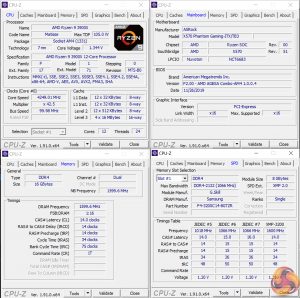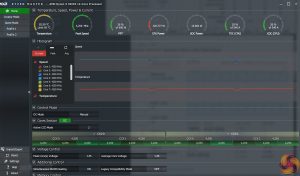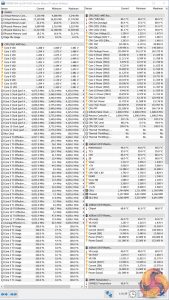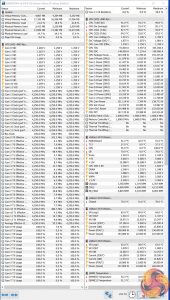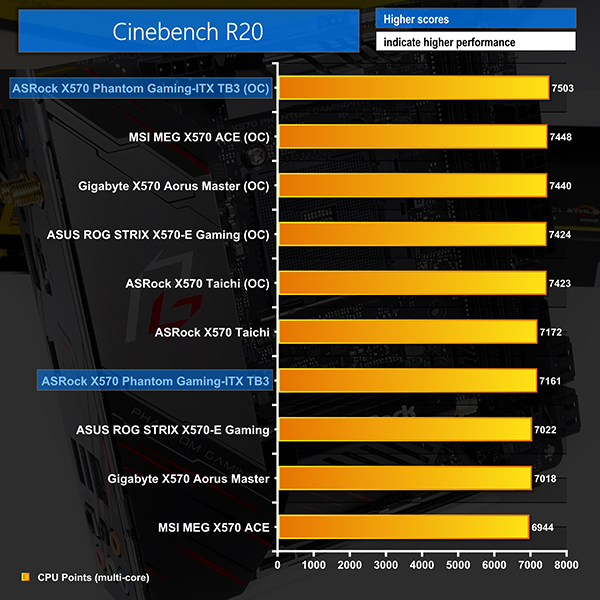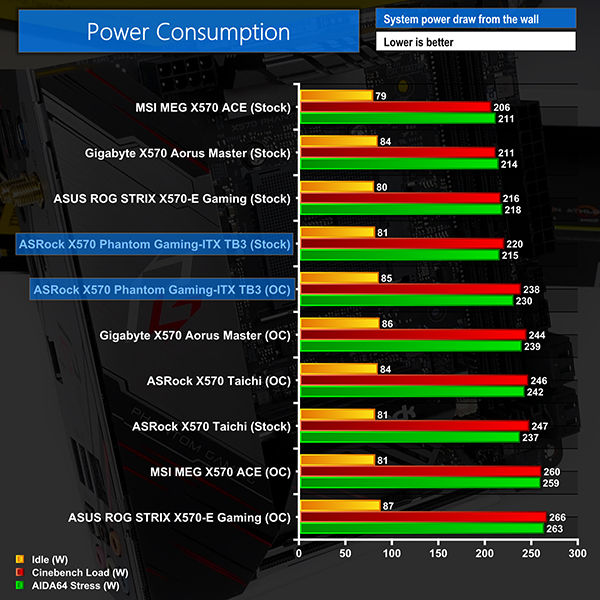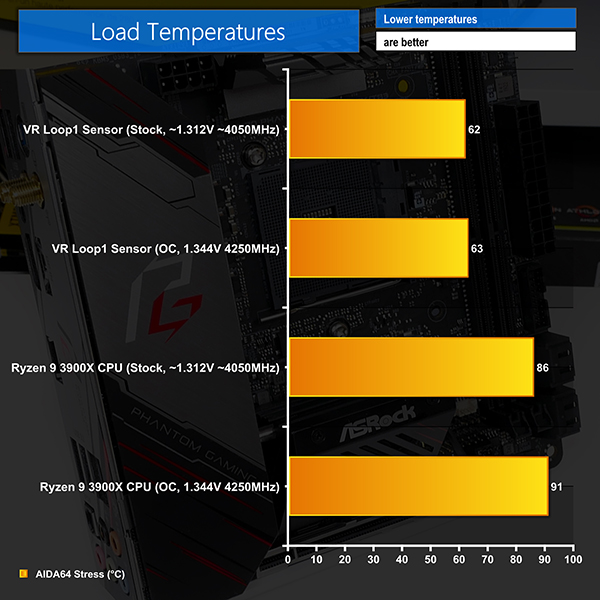Manual CPU Overclocking:
To test the ASRock X570 Phantom Gaming-ITX/TB3 motherboard’s CPU overclocking potential, we set the CPU Core Voltage to 1.35V and applied the Level 1 LLC setting.
Overclocking was very straightforward thanks to ASRock’s clear UEFI. We were able to hit our usual 4.25GHz with 1.35V with relative ease and the Level 1 LLC was selected thanks to ASRock’s clear display in the UEFI.
Voltage accuracy was good, with CPU-Z reporting a CPU core voltage of 1.344V under load, which represents a 6mV offset from our 1.35V target.
Motherboard Sensors
ASRock’s sensor data that is fed through to software such as HWiNFO64 looks to be fairly accurate as it corroborates reasonably with AMD Ryzen Master readings.
The Ryzen 9 3900X CPU commanded its typical 135-142W package power under stock conditions and this increased to around 150-160W under overclocked load.
Overclocked Performance
A noteworthy performance boost is obtained from the overclock to 4.25GHz and this helps bump ASRock’s ITX board up into top spot.
System Power Consumption
We leave the system to idle on the Windows 10 desktop for 10 minutes before taking a reading. For CPU load results we run AIDA64 CPU, FPU, and Cache stress tests and take a reading. The power consumption of our entire test system (at the wall) is shown in the chart.
As the physically smaller mini-ITX board is commanding more power than ATX alternatives from Gigabyte, MSI, and ASUS, there is clearly still room for ASRock to improve the motherboard’s stock-clocked voltage and power behaviour.
Overclocked readings with our chip manually tuned are particularly strong as the motherboard has little else to feed power to compared to the larger ATX competitors.
System Temperatures
We run the AIDA64 CPU stress test for 1 hour while recording the system data using HWInfo. This data is then analysed to show the CPU temperatures and also the VRM MOSFET temperatures.
CPU temperatures were certainly on the toasty side of things with numbers around the high-80s and low-90s mark in our very hot ambient environment. While this is more a reflection of our CPU cooler’s performance, it does reiterate the point that there is room for ASRock to tune the stock-clocked voltage levels further.
VRM temperature readings, both via the onboard sensors and through manual readings in the relevant locations, highlight superb results. Despite the small top-side heatsink, ASRock’s bulky cooling block that handles the majority of the VRM heat is more than adequate even for heavy overclocking. This is a testament to the efficiency of the Intersil-based VRM design.
Chipset temperatures were also where we’d expect – around 70C after sustained system usage. The chipset fan does, however, spin rapidly to achieve those temperatures and we regularly saw readings in the 6000 RPM range. This level is irritating, and we’d certainly recommend tuning a fan curve that you are comfortable with via the UEFI.
 KitGuru KitGuru.net – Tech News | Hardware News | Hardware Reviews | IOS | Mobile | Gaming | Graphics Cards
KitGuru KitGuru.net – Tech News | Hardware News | Hardware Reviews | IOS | Mobile | Gaming | Graphics Cards


